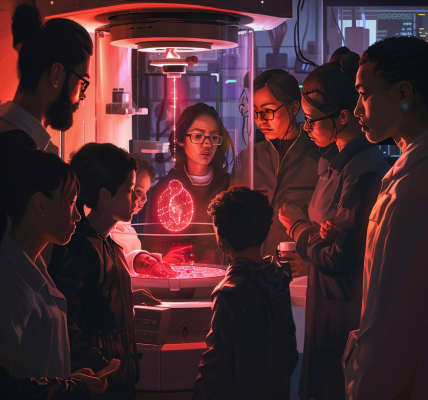Astrophysicists Measure Temperatures in Neutron Star Collision, Unveiling Heavy Element Origins
In a groundbreaking study, astrophysicists have successfully measured the temperature of elementary particles in the radioactive afterglow resulting from the collision of neutron stars. This remarkable event, which culminated in the formation of a black hole, offers a new lens through which scientists can explore the intricate details of these powerful cosmic phenomena. The research, conducted by a team from the Niels Bohr Institute at the University of Copenhagen, has been published in the esteemed journal Astronomy & Astrophysics.
The collision of two neutron stars led to the creation of the smallest black hole ever recorded. This spectacular cosmic event generated a colossal fireball that expanded at nearly the speed of light, radiating with a brilliance equivalent to hundreds of millions of suns in the days following the collision. This luminous phenomenon, known as a kilonova, emits significant amounts of radiation due to the decay of heavy radioactive elements produced during the explosive event.
By synthesizing measurements of the kilonova’s light from telescopes worldwide, the international research team, spearheaded by The Cosmic DAWN Center at the Niels Bohr Institute, has made significant strides in unraveling the mysteries surrounding this explosion. Their findings bring them closer to answering a long-standing question in astrophysics: the origin of elements heavier than iron.
One of the key aspects of this research is the role of global observatories in tracking and analyzing such astrophysical events. Albert Sneppen, a PhD student at the Niels Bohr Institute and the lead researcher on the study, explained, “This astrophysical explosion develops dramatically hour by hour, so no single telescope can follow its entire story. The viewing angle of the individual telescopes to the event is blocked by the rotation of the Earth. However, by combining the existing measurements from Australia, South Africa, and the Hubble Space Telescope, we can follow its development in great detail. We show that the whole shows more than the sum of the individual sets of data.”
Following the collision, the temperature of the fragmented star matter reached staggering levels, soaring to billions of degrees. This extreme heat is a thousand times hotter than the core of the sun, creating conditions that facilitate the formation of heavy elements through rapid neutron capture processes. These processes are essential for the synthesis of elements such as gold, platinum, and uranium, which are crucial to our understanding of the universe’s chemical evolution.
The implications of this research extend beyond mere academic curiosity; they touch upon fundamental questions about the origins of the elements that make up our world. The findings underscore the significance of neutron star mergers in the cosmic landscape, as they appear to be a primary source of heavy elements in the universe.
As scientists continue to explore the aftermath of neutron star collisions, the collaboration and data-sharing between observatories will be vital in piecing together the complex narrative of these celestial events. The integration of diverse observational data allows researchers to construct a more comprehensive picture of the explosion’s dynamics and the subsequent formation of heavy elements.
The study of neutron star collisions is poised to revolutionize our understanding of the universe. With advancements in technology and observational capabilities, astrophysicists can now probe deeper into the heart of these cosmic phenomena, unraveling the mysteries of the universe’s most violent events.
As researchers embark on this journey of discovery, the ongoing collaboration among global observatories will undoubtedly yield further insights into the nature of neutron stars, black holes, and the fundamental processes that govern the cosmos. This research not only enhances our understanding of astrophysics but also enriches our appreciation for the intricate tapestry of elements that compose our universe.
In summary, the collision of neutron stars represents a pivotal moment in the study of cosmic events, providing a window into the creation of heavy elements and the dynamics of black hole formation. The findings from the Niels Bohr Institute and its international collaborators mark a significant advance in our quest to comprehend the universe’s origins and the processes that shape it.





